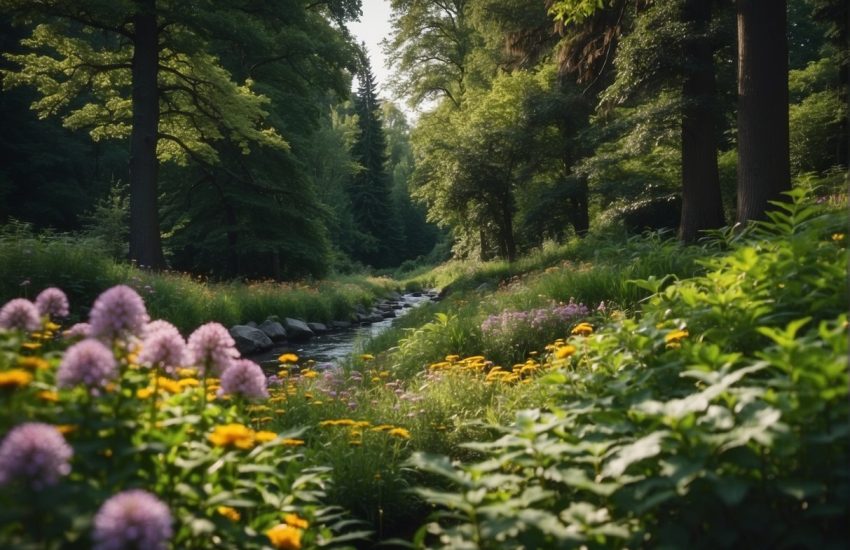What Zone is Minnesota? A Guide to Minnesota’s Plant Hardiness Zones
Minnesota is a state in the Upper Midwest region of the United States. It is known for its cold winters, and as such, gardeners in the state need to carefully consider what plants they can grow. One of the most important factors for gardeners to consider is the state’s Plant Hardiness Zone.
The USDA Plant Hardiness Zone map is a tool that gardeners can use to determine which plants are most likely to thrive in their area. The map is divided into zones based on the average minimum temperature that a region experiences. Gardeners in Minnesota will be interested to know that the state is divided into zones 3a through 5b, with different minimum winter temperatures and growing seasons.
Understanding the Plant Hardiness Zone is essential for gardeners in Minnesota. By knowing which zone they are in, they can choose plants that are hardy and suitable for their climate. This can save them time, money, and effort, as they will be less likely to waste resources on plants that are not suited to their environment.
Understanding Plant Hardiness Zones in Minnesota
Defining USDA Plant Hardiness Zones
The USDA Plant Hardiness Zone Map is a tool used by gardeners and growers to determine which plants are most likely to thrive in a particular location. The map is based on the average annual extreme minimum winter temperature, displayed as 10-degree F zones and 5-degree F half zones. The lower the number, the colder the zone.
Minnesota’s Climate and Hardiness Zones
Minnesota’s climate is classified as humid continental, with cold winters and warm summers. The state is divided into four USDA Plant Hardiness Zones: 2b, 3a, 3b, and 4a. The northern third of the state falls into Zone 3, with extreme low temperatures ranging from -30 to -40 degrees F. The rest of the state falls into Zone 4, with extreme low temperatures ranging from -20 to -30 degrees F.
The Twin Cities area, located in the southeastern part of the state, falls into Zone 4b, with extreme low temperatures ranging from -25 to -20 degrees F.
Zone Map Interpretation and Usage
It is important to note that the USDA Plant Hardiness Zone Map is based on 30-year averages of winter temperature data and does not take into account other factors that may affect plant growth, such as soil type, rainfall, and humidity.
Gardeners and growers can use the map as a general guide when selecting plants, but should also consider other factors that may affect plant growth. For example, some plants may be able to tolerate colder temperatures if they are planted in a sheltered location or if they are covered during extreme cold spells.
In conclusion, understanding plant hardiness zones is an important aspect of successful gardening and growing in Minnesota. By using the USDA Plant Hardiness Zone Map and considering other factors that may affect plant growth, gardeners and growers can select plants that are most likely to thrive in their location.
Practical Gardening Tips for Minnesota’s Climate
Selecting the Right Plants for Your Garden
When selecting plants for your garden in Minnesota, it’s important to consider the USDA hardiness zone, which is Zone 3 in the northern third of the state and Zone 4 in the rest of the state. This means that plants should be able to survive winter temperatures that can dip down to -30°F. Choose plants that are hardy and can withstand the cold temperatures. Some popular choices include coneflowers, black-eyed Susans, and daylilies.
Microclimate Considerations and Local Variations
It’s important to consider the microclimate of your garden when selecting plants. Microclimates are small areas within a larger climate zone that have slightly different weather conditions. For example, a garden that is located near a lake may have milder temperatures than a garden that is located further inland. Understanding these variations can help you choose the right plants for your garden.
Soil Type and Water Management
Minnesota has a diverse range of soil types, from sandy soils in the south to clay soils in the north. It’s important to choose plants that are suited to your soil type. If you have sandy soil, for example, you’ll want to choose plants that are drought-tolerant and don’t require a lot of water. If you have clay soil, you’ll want to choose plants that can tolerate wet conditions.
Water management is also important in Minnesota, especially during times of drought. Consider installing a rain barrel to collect rainwater for your garden. This can help reduce your water bill and provide your plants with the water they need during dry periods. Additionally, consider choosing plants that are drought-tolerant and don’t require a lot of water.
Overall, gardeners in Minnesota should choose plants that are hardy, suited to their microclimate, and can tolerate their soil type and water conditions. By following these tips, you can create a beautiful and thriving garden in Minnesota’s unique climate.


